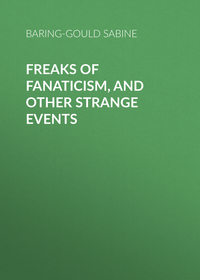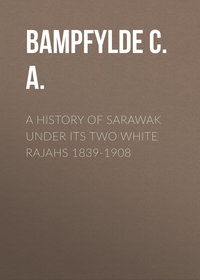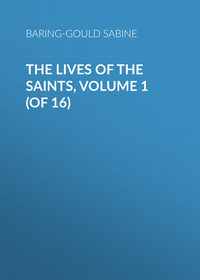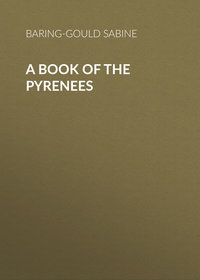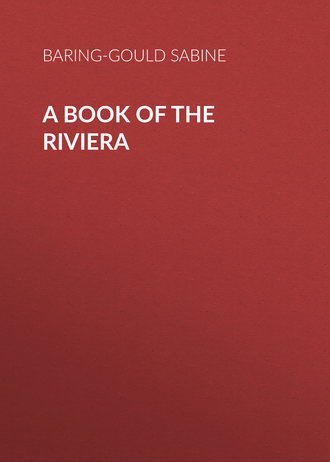 полная версия
полная версияA Book of The Riviera
Wherever the Roman empire extended, there may be seen the same huge structures, almost invariable in plan, and all devoted to pleasure and luxury. The forum, the temples, sink into insignificance beside the amphitheatre, the baths, and the circus. Citizens of the empire lived for their ease and amusements, and concerned themselves little about public business. In the old days of the Republic, the interests, the contests, of the people were forensic. The forum was their place of assembly. But with the empire all was changed. Public transaction of business ceased, the despotic Cæsar provided for, directed, governed all, Roman citizens and subject peoples alike. They were left with nothing to occupy them, and they rushed to orgies of blood. Thus these vast erections tell us, more than the words of any historian, how great was the depravity of the Roman character.
But with the fifth century this condition of affairs came to an end. The last time that the circus of Arles was used for races was in 462. The theatre there was wrecked by a deacon called Cyril in 446. At the head of a mob he burst into it, and smashed the loveliest statues of the Greek chisel, and mutilated every article of decoration therein. The stage was garnished with elegant colonnets; all were thrown down and broken, except a few that were carried off to decorate churches. All the marble casing was ripped away, the bas-reliefs were broken up, and the fragments heaped in the pit. There was some excuse for this iconoclasm. The stage had become licentious to the last degree, and there was no drawing the people from the spectacles. “If,” says Salvian, “as often happens, the public games coincide with a festival of the Church, where will the crowd be? In the house of God, or in the amphitheatre?”
During that fifth century the Visigoths and the Burgundians threatened Provence. When these entered Gaul they were the most humanised of the barbarians; they had acquired some aptitude for order, some love of the discipline of civil life. They did not devastate the cities, they suffered them to retain their old laws, their religion, and their customs. With the sixth century the domination of the Visigoths was transferred beyond the Pyrenees, and the Burgundians had ceased to be an independent nation; the Franks remained masters over almost the whole of Gaul.
In 711 the Saracens, or Moors, crossed over at Gibraltar and invaded Spain. They possessed themselves as well of Sicily, Sardinia, and the Balearic Isles. Not content with this, they cast covetous eyes on Gaul. They poured through the defiles of the Pyrenees and spread over the rich plains of Aquitaine and of Narbonne. Into this latter city the Calif Omar II. broke in 720, massacred every male, and reduced the women to slavery. Béziers, Saint Gilles, Arles, were devastated; Nîmes opened to them her gates. The horde mounted the valley of the Rhone and penetrated to the heart of France. Autun was taken and burnt in 725. All Provence to the Alps was theirs. Then in 732 came the most terrible of their invasions. More than 500,000 men, according to the chroniclers, led by Abdel-Raman, crossed the Pyrenees, took the road to Bordeaux, which they destroyed, and ascended the coast till they were met and annihilated by Charles Martel on the field of Poitiers.
From this moment the struggle changed its character. The Christians assumed the offensive. Charles Martel pursued the retreating host, and took from them the port of Maguelonne; and when a crowd of refugees sought shelter in the amphitheatre of Arles, he set fire to it and hurled them back into the flames as they attempted to escape. Their last stronghold was Narbonne, where they held out for seven years, and then in 759 that also fell, and the Moorish power for evil in France was at an end; but all the south, from the Alps to the ocean, was strewn with ruins.
They were not, however, wholly discouraged. Not again, indeed, did they venture across the Pyrenees in a great host; but they harassed the towns on the coast, and intercepted the trade. When the empire of Charlemagne was dismembered, Provence was separated from France and constituted a kingdom, under the administration of one Boso, who was crowned at Arles in 879. This was the point of departure of successive changes, which shall be touched on in the sequel. The German kings and emperors laid claim to Provence as a vassal state, and it was not till 1481 that it was annexed to the Crown of France. Avignon and the Venaissin were not united to France till 1791.
In no part of Europe probably did pagan customs linger on with such persistence as in this favoured land of Provence, among a people of mixed blood – Ligurian, Phœnician, Greek, Roman, Saracen. Each current of uniting blood brought with it some superstition, some vicious propensity, or some strain of fancy. In the very first mention we have of the Greek settlers, allusion is made to the Floral Games. The Battle of Flowers, that draws so many visitors to Nice, Mentone, and Cannes, is a direct descendant from them; but it has acquired a decent character comparatively recently.
At Arles, the Feast of Pentecost was celebrated throughout the Middle Ages by games ending with races of girls, stark naked, and the city magistrates presided over them, and distributed the prizes, which were defrayed out of the town chest. It was not till the sixteenth century, owing to the remonstrances of a Capuchin friar, that the exhibition was discontinued. Precisely the same took place at Beaucaire. At Grasse, every Thursday in Lent saw the performance in the public place of dances and obscene games, and these were not abolished till 1706 by the energy of the bishop, who threatened to excommunicate every person convicted of taking part in the disgusting exhibition of “Les Jouvines.”
A native of Tours visited Provence in the seventeenth century, and was so scandalised at what he saw there, that he wrote, in 1645, a letter of remonstrance to his friend Gassendi. Here is what he says of the manner in which the festival of S. Lazarus was celebrated at Marseilles: —
“The town celebrates this feast by dances that have the appearance of theatrical representations, through the multitude and variety of the figures performed. All the inhabitants assemble, men and women alike, wear grotesque masks, and go through extravagant capers. One would think they were satyrs fooling with nymphs. They hold hands, and race through the town, preceded by flutes and violins. They form an unbroken chain, which winds and wriggles in and out among the streets, and this they call le Grand Branle. But why this should be done in honour of S. Lazarus is a mystery to me, as indeed are a host of other extravagances of which Provence is full, and to which the people are so attached, that if any one refuses to take part in them, they will devastate his crops and his belongings.”
The carnival and micarême have taken the place of this exhibition; and no one who has seen the revelries at these by night can say that this sort of fooling is nearing its end. Now these exhibitions have become a source of profit to the towns, as drawing foreigners to them, and enormous sums are lavished by the municipalities upon them annually. The people of the place enter into them with as much zest as in the centuries that have gone by.
Dancing in churches and churchyards lasted throughout the Middle Ages. The clergy in vain attempted to put it down, and, unable to effect this, preceded these choric performances by a sermon, to deter the people from falling into excesses of extravagance and vice. At Limoges, not indeed in Provence, the congregation was wont to intervene in the celebration of the feast of their apostle, S. Martial, by breaking out into song in the psalms, “Saint Martial pray for us, and we will dance for you!” Whereupon they joined hands and spun round in the church.2
This leads to the mention of what is of no small interest in the history of the origin of part-singing. Anyone familiar with vespers, as performed in French churches, is aware that psalms and canticles are sung in one or other fashion: either alternate verses alone are chanted, and the gap is filled in by the organ going through astounding musical frolics; or else one verse is chanted in plain-song, and the next in fauxbourdon– that is to say, the tenor holds on to the plain-song, whilst treble and alto gambol at a higher strain a melody different, but harmonious with the plain-song. In Provence at high mass the Gloria and Credo are divided into paragraphs, and in like manner are sung alternately in plain-song and fauxbourdon. The origin of this part-singing is very curious. The congregation, loving to hear their own voices, and not particularly interested in, or knowing the Latin words, broke out into folk-song at intervals, in the same “mode” as that of the tone sung by the clergy. They chirped out some love ballad or dance tune, whilst the officiants in the choir droned the Latin of the liturgy. Even so late as 1645, the Provençals at Christmas were wont to sing in the Magnificat a vulgar song —
“Que ne vous requinquez-vous, Vielle,Que ne vous requinquez, donc?”which may be rendered —
“Why do you trick yourself out, old woman?O why do you trick yourself so?”In order to stop this sort of thing the clergy had recourse to “farcing” the canticles, i. e. translating each verse into the vernacular, and interlarding the Latin with the translation, in hopes that the people, if sing they would, would adopt these words; but the farced canticles were not to the popular taste, and they continued to roar out lustily their folk-songs, often indelicate, always unsuitable. This came to such a pass that either the organ was introduced to bellow the people down, or else the system was accepted and regulated; and to this is due the fauxbourdon. But in Italy and in the South of France it passed for a while beyond regulation. The musicians accepted it, and actually composed masses, in which the tenor alone sang the sacred words and the other parts performed folk-songs.
As Mr. Addington Symonds says: —
“The singers were allowed innumerable licences. Whilst the tenor sustained the Gregorian melody, the other voices indulged in extempore descant, regardless of the style of the main composition, violating time, and setting even the fundamental tone at defiance. The composers, to advance another step in the analysis of this strange medley, took particular delight in combining different sets of words, melodies of widely diverse character, antagonistic rhythms, and divergent systems of accentuation, in a single piece. They assigned these several ingredients to several parts, and for the further exhibition of their perverse skill, went even to the length of coupling themes in the major and the minor. The most obvious result of such practice was that it became impossible to understand what was being sung, and that instead of concord and order in the choir, a confused discord and anarchy of dinning sounds prevailed. What made the matter, from an ecclesiastical point of view, still worse, was that these scholastically artificial compositions were frequently based on trivial and vulgar tunes, suggesting the tavern, the dancing-room, or even worse places, to worshippers assembled for the celebration of a Sacrament. Masses bore titles adopted from the popular airs on which they were founded; such, for example, as Adieu, mes amours, À l’ombre d’un buissonnet, Baise moi, Le vilain jaloux. Even the words of love ditties and obscene ballads were being squalled out by the tenor (treble?) while the bass (tenor?) gave utterance to an Agnus Dei or a Benedictus, and the soprano (alto?) was engaged upon the verses of a Latin hymn. Baini, who examined hundreds of the masses and motetts in MS., says that the words imported into them from vulgar sources ‘make one’s flesh creep, and one’s hair stand on end.’ He does not venture to do more than indicate a few of the more decent of these interloping verses. As an augmentation of this indecency, numbers from a mass which started with the grave rhythm of a Gregorian tone were brought to their conclusion on the dance measure of a popular ballata, so that Incarnatus est or Kyrie eleison went jigging off into suggestions of Masetto and Zerlina at a village ball.”3
The musicians who composed these masses simply accepted what was customary, and all they did was to endeavour to reduce the hideous discords to harmony. But it was this superposing of folk-songs on Gregorian tones that gave the start to polyphonic singing. The state of confusion into which ecclesiastical music had fallen by this means rendered it necessary that a reformation should be undertaken, and the Council of Trent (Sept. 17, 1562) enjoined on the Ordinaries to “exclude from churches all such music as, whether through the organ or the singing, introduces anything impure or lascivious, in order that the house of God may truly be seen to answer to its name, A House of Prayer.” Indeed, all concerted and part music was like to have been wholly banished from the service of the church, had not Palestrina saved it by the composition of the “Mass of Pope Marcellus.”
A visitor to Provence will look almost in vain for churches in the Gothic style. A good many were built after Lombard models. There remained too many relics of Roman structures for the Provençals to take kindly to the pointed arch. The sun had not to be invited to pour into the naves, but was excluded as much as might be, consequently the richly traceried windows of northern France find no place here. The only purely Gothic church of any size is that of S. Maximin in Var. That having been a conventual church, imported its architects from the north.
One curious and indeed unique feature is found in the Provençal cathedral churches: the choir for the bishop and chapter is at the west end, in the gallery, over the narthex or porch. This was so at Grasse; it remains intact at Vence.
CHAPTER II
LE GAI SABER
The formation of the Provençal tongue – Vernacular ballads and songs: brought into church – Recitative and formal music – Rhythmic music of the people: traces of it in ancient times: S. Ambrose writes hymns to it – People sing folk-songs in church – Hymns composed to folk-airs – The language made literary by the Troubadours – Position of women – The ideal love – Ideal love and marriage could not co-exist – William de Balaun – Geofrey Rudel – Poem of Pierre de Barjac – Boccaccio scouts the Chivalric and Troubadour idealsWHAT the language of the Ligurians was we do not know. Among them came the Phœnicians, then the Greeks, next the Romans. The Roman soldiery and slaves and commercials did not talk the stilted Latin of Cicero, but a simple vernacular. Next came the Visigoths and the Saracens. What a jumble of peoples and tongues! And out of these tongues fused together the Langue d’oc was evolved.
It is remarkable how readily some subjugated peoples acquire the language of their conquerors. The Gauls came to speak Latin. The Welsh – the bulk of the population was not British at all; dark-haired and dark-eyed, they were conquered by the Cymri and adopted their tongue. So in Provence, although there is a strong strain of Ligurian blood, the Ligurian tongue is gone past recall. The prevailing language is Romance; that is to say, the vernacular Latin. Verna means a slave; it was the gabble of the lower classes, mainly a bastard Latin, but holding in suspense drift words from Greek and Gaulish and Saracen. In substance it was the vulgar talk of the Latins. Of this we have curious evidence in 813. In his old age Charlemagne concerned himself much with Church matters, and he convoked five Councils in five quarters of his empire to regulate Church matters. These Councils met in Mainz, Rheims, Châlons, Tours, and Arles. It was expressly laid down in all of these, save only in that of Arles, that the clergy should catechise and preach in the vulgar tongue; where there were Franks, in German; where there were Gauls, in the Romance. But no such rule was laid down in the Council of Arles, for the very reason that Latin was still the common language of the people, the simple Latin of the gospels, such as was perfectly understood by the people when addressed in it.
The liturgy was not fixed and uniform. In many secondary points each Church had its own use. Where most liberty and variety existed was in the hymns. The singing of hymns was not formally introduced into the offices of the Church till the tenth century; but every church had its collection of hymns, sung by the people at vigils, in processions, intercalated in the offices. In Normandy it was a matter of complaint that whilst the choir took breath the women broke in with unsuitable songs, nugacis cantalenis. At funerals such coarse ballads were sung that Charlemagne had to issue orders that where the mourners did not know any psalm they were to shout Kyrie eleison, and nothing else. Agobard, Bishop of Lyons, A.D. 814-840, says that when he entered on his functions he found in use in the church an antiphonary compiled by the choir bishop, Amalric, consisting of songs so secular, and many of them so indecent, that, to use the expression of the pious bishop, they could not be read without mantling the brow with shame.
One of these early antiphonaries exists, a MS. of the eleventh century belonging to the church of S. Martial. Among many wholly unobjectionable hymns occurs a ballad of the tale of Judith; another is frankly an invocation to the nightingale, a springtide song; a third is a dialogue between a lover and his lass.
It is in the ecclesiastical hymns, religious lessons, and legends couched in the form of ballads, coming into use in the eighth and ninth centuries, that we have the germs, the rudiments, of a new literature; not only so, but also the introduction of formal music gradually displacing music that is recitative.
Of melodies there are two kinds, the first used as a handmaid to poetry; in it there is nothing formal. A musical phrase may be repeated or may not, as required to give force to the words employed. This was the music of the Greek and Roman theatre. The lyrics of Horace and Tibullus could be sung to no other. This, and this alone, was the music adopted by the Church, and which we have still in the Nicene Creed, Gloria, Sanctus, and Pater Noster. But this never could have been the music of the people – it could not be used by soldiers to march to, nor by the peasants as dance tunes.
Did rhythmic music exist among the ancients side by side with recitative? Almost certainly it did, utterly despised by the cultured.
When Julius Cæsar was celebrating his triumph at Rome after his Gaulish victories, we are informed that the soldiery marched singing out: —
“Gallias Cæsar subegitMithridates Cæsarem.Ecce Cæsar nunc triumphat,Qui subegit Gallias,Nicomedes non triumphat,Qui subegit Cæsarem.”This must have been sung to a formal melody, to which the soldiers tramped in time.
So also Cæsar, in B.C. 49, like a liberal-minded man, desired to admit the principal men of Cisalpine Gaul into the Senate. This roused Roman prejudice and mockery. Prejudice, because the Gauls were esteemed barbarians; mockery, because of their peculiar costume – their baggy trousers. So the Roman rabble composed and sang verses, “illa vulgo canebantur.” These may be rendered in the same metre: —
“Cæsar led the Gauls in triumph,Then to Senate-house admits.First must they pull off their trousers,Ere the laticlavus fits.”Now, it may be noted that in both instances the rhythm is not at all that of the scientifically constructed metric lines of Horace, Tibullus, and Catullus, but is neither more nor less than our familiar 8.7. time. The first piece of six lines in 8.7. is precisely that of “Lo! He comes in clouds descending.” The second of four lines is that of the familiar Latin hymn, Tantum ergo, and is indeed that also of our hymn, “Hark! the sound of holy voices.”4
Nor is this all. Under Cæsar’s statue were scribbled the lines of a lampoon; that also was in 8.7. Suetonius gives us another snatch of a popular song relative to Cæsar, in the same measure. Surely this goes to establish the fact that the Roman populace had their own folk-music, which was rhythmic, with tonal accent, distinct from the fashionable music of the theatre.
Now, it is quite true that in Latin plays there was singing, and, what is more, songs introduced. For instance, in the Captivi of Plautus, in the third act, Hegio comes on the stage singing —
“Quid est suavius quamBene rem gerere bono publico, sicut feciEgo heri, quum eius hosce homines, ubi quisqueVident me hodie,” etc.But I defy any musician to set his song to anything else but recitative; the metre is intricate and varied.
Now of rhythmic melody we have nothing more till the year A.D. 386, when, at Milan, the Empress Justina ordered that a church should be taken from the Catholics and be delivered over to the Arians.
Thereupon S. Ambrose, the bishop, took up his abode within the sacred building, that was also crowded by the faithful, who held it as a garrison for some days. To occupy the people Ambrose hastily scribbled down some hymns – not at all in the old classic metres, but in rhythmic measure – and set them to sing these, no doubt whatever, to familiar folk-airs. Thirteen of the hymns of S. Ambrose remain. His favourite metre is —
“Te lucis ante terminum,”our English Long Measure. And what is more, the traditional tunes to which he set these hymns have been handed down, so that in these we probably possess the only ascertainable relics of Roman folk-airs of the fourth century, and who can tell of how much earlier?
Now, in ancient days the people were wont to crowd to church on the vigils of festivals and spend the night in or outside the churches in singing and dancing. To drive out the profane and indelicate songs, the clergy composed hymns and set them to the folk-airs then in vogue. These hymns came into use more and more, and at length simply forced their way into the services of the Church – but were not recognised as forming a legitimate part of it till the tenth century.
The ecclesiastical hymns for the people, after having been composed in barbarous Latin, led by a second step to the vernacular Romance. The transition was easy, and was, indeed, inevitable. And in music, recitative fell into disfavour, and formal music, to which poetry is the handmaid, came into popular usage exclusively; recitative lingering on only in the liturgy of the Church. The Provençal language was now on its way to becoming fixed and homogeneous; the many local variations found in the several districts tending to effacement.
Then came the golden age of the Troubadours, who did more than any before to fix the tongue. In the twelfth century the little courts of the Provençal nobles were renowned for gallantry. In fact, the knights and barons and counts of the South plumed themselves on setting the fashion to Christendom. In the South there was none of that rivalry existing elsewhere between the knights in their castles and the citizens in the towns. In every other part of Western Europe the line of demarcation was sharp between the chivalry and the bourgeoisie. Knighthood could only be conferred on one who was noble and who owned land. It was otherwise in the South; the nobility and the commercial class were on the best of terms, and one great factor in this fusion was the Troubadour, who might spring from behind a counter as well as from a knightly castle.
The chivalry of the South, and the Troubadour, evolved the strange and, to our ideas, repulsive theory of love, which was, for a time, universally accepted. What originated it was this:
In the south of France women could possess fiefs and all the authority and power attaching to them. From this political capacity of women it followed that marriages were contracted most ordinarily by nobles with an eye to the increase of their domains. Ambition was the dominant passion, and to that morality, sentiment, inclination, had to give way and pass outside their matrimonial plans. Consequently, in the feudal caste, marriages founded on such considerations were regarded as commercial contracts only, and led to a most curious moral and social phenomenon.
The idea was formed of love as a sentiment, from which every sensual idea was excluded, in which, on the woman’s side, all was condescension and compassion, on the man’s all submission and homage. Every lady must have her devoted knight or minstrel – her lover, in fact, who could not and must not be her husband; and every man who aspired to be courteous must have his mistress.





